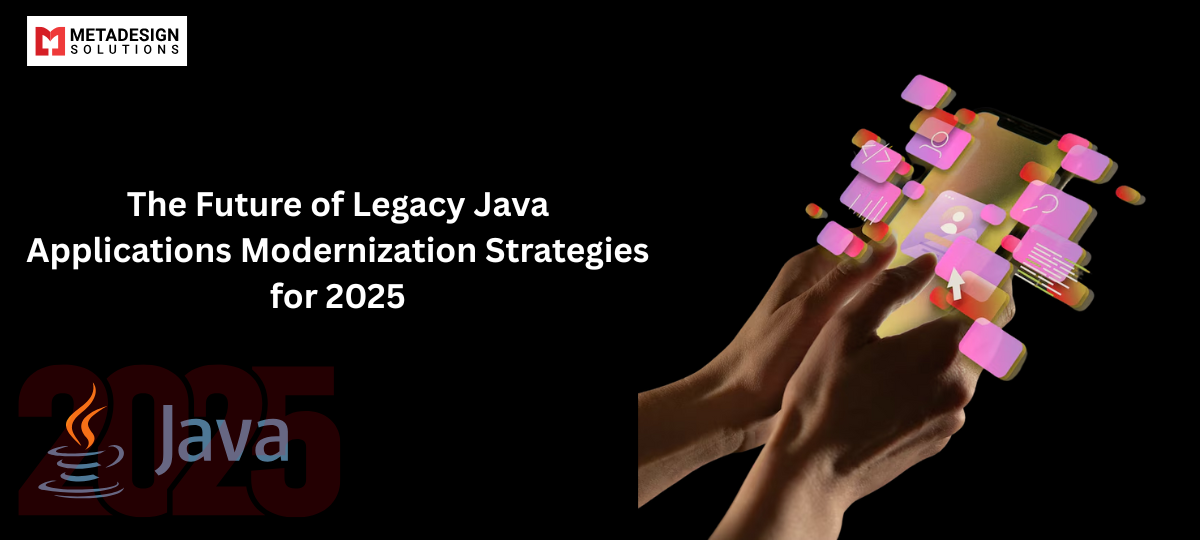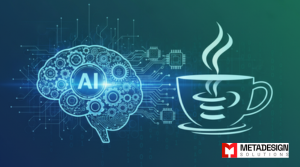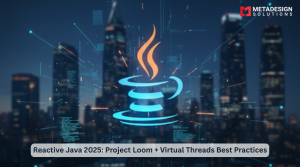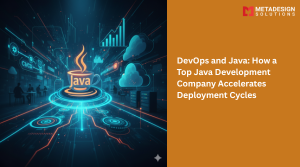Introduction: The Need for Legacy Java Application Modernization
In the fast-paced world of technology, businesses and organizations that rely on legacy systems often struggle to stay competitive. Java, a language that has powered enterprise applications for decades, is no exception. Many companies still use legacy Java applications that have been in place for years, if not decades. However, these applications often face challenges in terms of scalability, security, and integration with modern technologies.
As we approach 2025, it is crucial to explore effective strategies for modernizing legacy Java applications. Modernization is not just about upgrading; it’s about transforming legacy systems to meet the demands of the modern digital landscape, ensuring they are agile, scalable, secure, and cost-efficient.
In this evolving digital landscape, it’s important to remember that Java technology is alive and continues to evolve, providing businesses with powerful tools to stay competitive while modernizing legacy systems.
Understanding Legacy Java Applications
Legacy Java applications refer to older Java-based software systems that may no longer be supported by their original vendors or have become difficult to maintain due to outdated technologies, architectures, or libraries. These applications might have been built using older versions of Java or monolithic architectures, which are now considered inefficient for handling modern business needs.
Key characteristics of legacy Java applications include:
- Monolithic Architecture: The entire application is built as a single, interconnected unit, making it difficult to modify or scale specific parts of the application without affecting the entire system.
- Outdated Frameworks and Libraries: Legacy Java applications might rely on old versions of frameworks and libraries that are no longer supported or efficient.
- Poor Scalability: These applications often struggle to scale in response to increasing business demands, hindering their ability to support growth.
Modernizing these applications is essential for staying competitive, improving performance, and reducing maintenance costs.
Challenges with Legacy Java Applications
Modernizing legacy Java applications comes with its own set of challenges. Some of the most common challenges include:
- Complexity and Size: Legacy applications are often large and complex, making it difficult to understand their inner workings. This complexity can increase the risk of introducing errors during modernization efforts.
- Lack of Documentation: Many legacy Java applications were developed years ago, often with limited documentation. This makes it harder to understand how the system works, which can slow down the modernization process.
- Technical Debt: Over time, legacy systems accumulate “technical debt,” which refers to suboptimal coding practices, outdated libraries, and inefficient architectures. Addressing this debt requires a significant investment of time and resources.
- Compatibility with Modern Technologies: Integrating legacy applications with modern technologies, such as cloud platforms or new databases, can be challenging. These applications may require significant modifications to work with the latest technologies.
Despite these challenges, modernizing legacy Java applications is crucial for businesses to stay competitive, agile, and secure in an ever-changing technological landscape.
Struggling with Legacy Java Systems?
Schedule a free consultation to explore tailored modernization strategies.
Modernization Strategies for Legacy Java Applications
There are several strategies for modernizing legacy Java applications, depending on the specific needs of the business and the complexity of the system. These strategies can range from completely rewriting the application to adopting microservices and cloud-native technologies.
4.1 Rewriting Applications from Scratch
One of the most drastic approaches to modernizing a legacy Java application is to rewrite it entirely from scratch. This approach is usually chosen when the legacy system is too outdated or too complex to be modernized incrementally. Rewriting the application allows organizations to redesign the system with modern architectures, frameworks, and technologies from the ground up.
However, this approach is resource-intensive and time-consuming. It requires a deep understanding of the legacy system’s business logic and the development of a new system that meets current and future needs. This can lead to significant disruptions during the transition, but it also provides an opportunity to innovate and improve the system’s performance, scalability, and security.
4.2 Re-architecting Legacy Systems
Instead of rewriting the entire application, some organizations choose to re-architect their legacy systems. Re-architecting involves breaking down the monolithic application into smaller, more manageable components that can be modernized independently.
A common approach to re-architecting legacy systems is to implement microservices. By dividing the system into smaller, loosely coupled services, organizations can modernize individual parts of the application without affecting the entire system. This approach allows for more flexible scaling, easier integration with modern technologies, and improved maintainability.
4.3 Using Microservices for Modernization
Microservices architecture is one of the most popular strategies for modernizing legacy applications. In a microservices-based system, the application is divided into small, self-contained services that each handle a specific business function. These services can be developed, deployed, and scaled independently, making it easier to add new features and maintain the system.
For legacy Java applications, transitioning to a microservices architecture may involve:
- Decomposing the Monolith: Breaking down the monolithic application into individual microservices.
- API Gateway: Implementing an API gateway to route traffic between microservices.
- Containers and Orchestration: Using containers (e.g., Docker) and orchestration tools (e.g., Kubernetes) to deploy and manage microservices efficiently.
By adopting microservices, businesses can increase their flexibility, scalability, and ability to innovate.
4.4 Adopting Cloud Technologies
Cloud computing has become a key enabler of digital transformation. By adopting cloud technologies, businesses can modernize their legacy Java applications and take advantage of the cloud’s scalability, flexibility, and cost-efficiency.
Migrating legacy Java applications to the cloud typically involves:
- Infrastructure as a Service (IaaS): Moving the application to a cloud provider’s infrastructure, allowing the organization to take advantage of the cloud’s computing power and storage.
- Platform as a Service (PaaS): Migrating to a cloud platform that provides a managed environment for running applications, reducing the complexity of managing infrastructure.
Cloud migration also opens the door for organizations to leverage other cloud-native services, such as managed databases, serverless computing, and AI/ML platforms, to further modernize their applications.
4.5 Containerization and Virtualization
Containerization involves packaging an application and its dependencies into a single container that can be run consistently across different environments. This approach allows for greater portability, scalability, and ease of deployment.
For legacy Java applications, containerization using technologies like Docker allows the application to be run in isolated, lightweight containers. This makes it easier to modernize the application incrementally while maintaining compatibility with existing infrastructure.
Virtualization, on the other hand, involves creating virtual instances of hardware, enabling legacy Java applications to run on virtual machines (VMs) rather than physical servers. This can improve resource utilization and allow for easier migration to the cloud.
Tools and Frameworks for Java Application Modernization
To successfully modernize legacy Java applications, organizations can leverage a variety of tools and frameworks. These tools can facilitate migration, cloud adoption, re-architecture, and automation, making the process more efficient and manageable.
5.1 Java Frameworks for Modernization
Several modern Java frameworks are available that can help in the process of modernizing legacy applications using java development services. These frameworks support microservices, cloud integration, and improved performance.
- Spring Boot: This framework simplifies the creation of stand-alone, production-grade applications. It is particularly useful for developing microservices and integrating legacy Java applications with modern cloud platforms. Spring Boot supports a variety of features such as embedded servers, security, and configuration management, making it an ideal choice for modernizing legacy systems.
- Quarkus: Quarkus is a Kubernetes-native Java framework optimized for cloud-native development. It is designed to work with containers and microservices, making it an excellent choice for organizations moving their legacy Java applications to the cloud.
- Vert.x: Vert.x is a toolkit for building reactive applications on the JVM. It is highly scalable and asynchronous, which makes it a good choice for high-performance applications and modernizing legacy systems that require handling high volumes of concurrent requests.
5.2 Cloud Platforms and Tools
Cloud platforms play a pivotal role in modernizing legacy Java applications. By leveraging the cloud, businesses can scale their applications efficiently while reducing infrastructure costs. Some key platforms and tools include:
- Amazon Web Services (AWS): AWS offers a range of services such as EC2 for compute, RDS for databases, and Lambda for serverless computing. Java applications can be migrated to AWS to take advantage of auto-scaling, managed services, and seamless integration with other cloud tools.
- Microsoft Azure: Azure’s comprehensive cloud offerings, such as Azure Kubernetes Service (AKS) and Azure App Service, allow businesses to modernize their Java applications. Azure also provides tools for containerization and cloud migration, making it easier to move legacy applications to the cloud.
- Google Cloud Platform (GCP): GCP provides a range of tools like App Engine and Kubernetes Engine to modernize legacy Java applications. GCP’s infrastructure also supports machine learning, data analytics, and other advanced technologies that can further enhance the capabilities of legacy applications.
- IBM Cloud: IBM Cloud provides tools for microservices architecture and cloud-native development. Its services like IBM Cloud Kubernetes Service and IBM Cloud Foundry are great for modernizing legacy Java applications.
5.3 DevOps and Automation Tools
DevOps practices and automation tools are essential for modernizing legacy Java applications, as they help streamline development, deployment, and maintenance. Some common tools and practices include:
- Jenkins: Jenkins is an open-source automation server used to automate the software development lifecycle. It can be used to integrate modernized legacy Java applications into a continuous integration/continuous deployment (CI/CD) pipeline, enabling faster updates and more reliable deployments.
- Ansible: Ansible is an automation tool that helps manage IT infrastructure and application deployments. It can be used for automating the configuration of cloud environments, managing legacy Java applications, and ensuring consistent deployment across multiple environments.
- Docker: As mentioned earlier, Docker is essential for containerizing legacy Java applications. Docker allows you to create consistent development, testing, and production environments, making it easier to deploy modernized applications.
- Kubernetes: Kubernetes is a container orchestration platform that automates the deployment, scaling, and management of containerized applications. It is an essential tool when transitioning legacy Java applications to a microservices or cloud-native architecture.
Best Practices for Legacy Java Application Modernization
To ensure a successful modernization journey, here are some best practices that businesses should follow:
- Start with a Clear Strategy: Begin with a clear assessment of the legacy system and define the goals of modernization. Determine whether to rewrite the application, re-architect it, or migrate it to the cloud.
- Prioritize Business Value: Focus on modernizing parts of the application that provide the most business value. Start with mission-critical components that are critical for business operations and customer experience.
- Adopt Agile Methodology: Modernization efforts should be carried out incrementally. An agile approach allows businesses to make continuous improvements, reduce risk, and adapt to changing requirements.
- Leverage Automation: Use automation tools such as CI/CD pipelines, infrastructure as code (IaC), and testing frameworks to streamline the modernization process and reduce manual errors.
- Ensure Data Integrity: During the migration process, it’s crucial to ensure that data is properly migrated and validated. Data integrity should be a top priority to prevent disruptions to business operations.
- Monitor and Optimize: After modernizing legacy applications, continuously monitor their performance to identify areas for improvement. Leverage modern monitoring tools to ensure that the application is performing optimally.
The Road Ahead: Preparing for Java’s Future
As Java continues to evolve, it is essential for organizations to stay updated with the latest developments in the Java ecosystem. The future of Java lies in its ability to integrate with new technologies, such as artificial intelligence (AI), machine learning (ML), and blockchain. Java’s ongoing support for cloud-native architectures, microservices, and containerization positions it as a strong choice for future-proofing enterprise applications.
To stay ahead, businesses should:
- Invest in Training: Ensure that development teams are trained in modern Java frameworks, cloud technologies, and microservices architectures.
- Keep Up with Java Updates: Regularly update legacy Java applications to take advantage of new features, security improvements, and performance optimizations.
- Adopt Hybrid Strategies: As businesses increasingly move to the cloud, they should consider hybrid cloud strategies that combine on-premises and cloud-based resources to ensure flexibility and scalability.
Conclusion
Modernizing legacy Java applications is an essential part of staying competitive in today’s fast-paced digital landscape. Whether through rewriting, re-architecting, or leveraging microservices and cloud technologies, businesses can transform their legacy systems to meet the demands of 2025 and beyond. By following best practices, utilizing modern tools, and learning from successful case studies, organizations can ensure that their legacy Java applications remain agile, scalable, and secure in the years to come.
Related Keyphrase:
#JavaDevelopment #LegacySystemModernization #CloudMigration #MicroservicesArchitecture #JavaServices #ApplicationModernization #TechTransformation #JavaWebDevelopment #EnterpriseSolutions #CloudSolutions #JavaExperts #DevOps #JavaConsulting #JavaDevelopmentServices #CloudNative #TechInnovation #DigitalTransformation #HireJavaDevelopers #TechConsulting #ITServices #HireJavaExperts #SoftwareModernization #TechCompany #TechServices #CloudEngineering #SoftwareDevelopment #DevOpsServices



